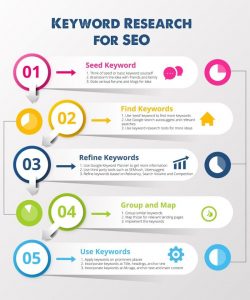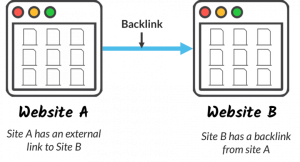If you’re looking to increase organic traffic to your site, having a solid SEO strategy will get you there. This article will go through some basic strategies that can show you how to create an SEO strategy from nothing.
Because not every SEO strategy works for every site, we suggest that you try out different strategies and see which works best for your content.
Contents
Keep 10 keywords in mind as you create an SEO strategy.
When creating content for your website, one of the first things you should do is figure out related topics that you can write about. These topics become your keywords, a major component of increasing traffic. For example, a keyword for this article might be “SEO strategy.”
Google’s Keyword Tool can help you decide what keywords work best for your kind of posts. You’ll receive a lot of options with this tool, so just focus on about 10 of them. To help you choose, figure out which keywords are most relevant to the post you’re going to create.
Also, see how these keywords are used within your competition. By checking your competitor’s search volume, you can get a better idea of which keywords work for your target audience. Here’s an article about how to check in on your competition.
Use, but don’t overuse, your long-tail keyword.
But you’ll need more than just those 10 keywords. You must also come up with suitable long-tail keywords. If you haven’t heard of this phrase before, a long-tail keyword can be three to 10 words that elaborate upon a specific topic.
Here’s an example: A single keyword could be “cuisine.” A long-tail keyword would be along the lines of, “quickest homemade cuisine recipes.” When you search up the results from the single word keyword compared to the long-tail keyword, the number of results are vastly different.
Use this long-tail keyword in your blog posts when you can, aiming for about three times for a post of an average length. If you overuse your long-tail keyword in your post, Google may lower your result ranking as overuse is looked at as keyword stuffing. Check out some of our tips for keyword research.
Post at Least Once a Week to Stay Relevant.
By blogging once a week you have a better chance of gaining Google’s attention. You don’t need to post every day. Readers don’t want spam of useless content just to be reminded you’re still active. Quality over quantity is important.
Use Backlinks to Gain Organic Traffic.
Backlinks are links to posts that support any information you’re presenting. They should help the reader better understand what you’re writing about.
When using backlinks, you can link to another relevant post from your own blog. Linking to other posts within your own blog can help boost a page. Creating a post just to help boost another is not uncommon and can be very effective when done right.
This is why it’s always handy to plan your posts ahead of time. Conjuring up a topic and then writing out all the different ways that topic can be expanded into multiple posts is a good way to gain more clicks. This is a highly recommended SEO strategy.
Inbound Links Benefit Your SEO Strategy.
An inbound link is a backlink that leads to a site that is not yours. These links can be used to emphasize a topic. When you’re going to use a link to someone else’s site, sometimes it helps to reach out to the creator. By reaching out, you’re making connections and could begin a collaboration where you both use links that lead to each other’s sites.
It’s a friendly way to gain organic traffic. These other bloggers most likely have different audience members than you have and will thus bring in new readers for you.
Minimize Your Media Size to Create a User-Friendly Website.
The more you post, the more media your site will obtain. While it’s important to have media on your page to gain and retain readers’ attention, media files can take up a lot of space, which can in turn affect your site’s speed rate.
The larger files are, the harder it can be for a browser to pull your page up. And if your page is hard to pull up, your site drops down lower in search engine rankings.
Before uploading a photo to a post, you should check the photo’s size. If it’s more than a megabyte (MB), you should compress it. There are plenty of free sites available that allow you to do this. Consider using PicMonkey or Resize Image.
Be aware, some photos can lose a great deal of quality when being resized. Use a resizing tool that works best for your images.
Conclusion: Plan Ahead and Keep Adjusting
There are a few very important steps to take when you create an SEO strategy from scratch. Probably one of the first and most important things is to plan ahead. Find keywords that work for your content and go from there.
And don’t forget!
It’s all well and good to follow these practices, but you also need to keep an eye on your website’s success rate. If your website isn’t on track with your goals, you need to adjust and focus on new strategies.



